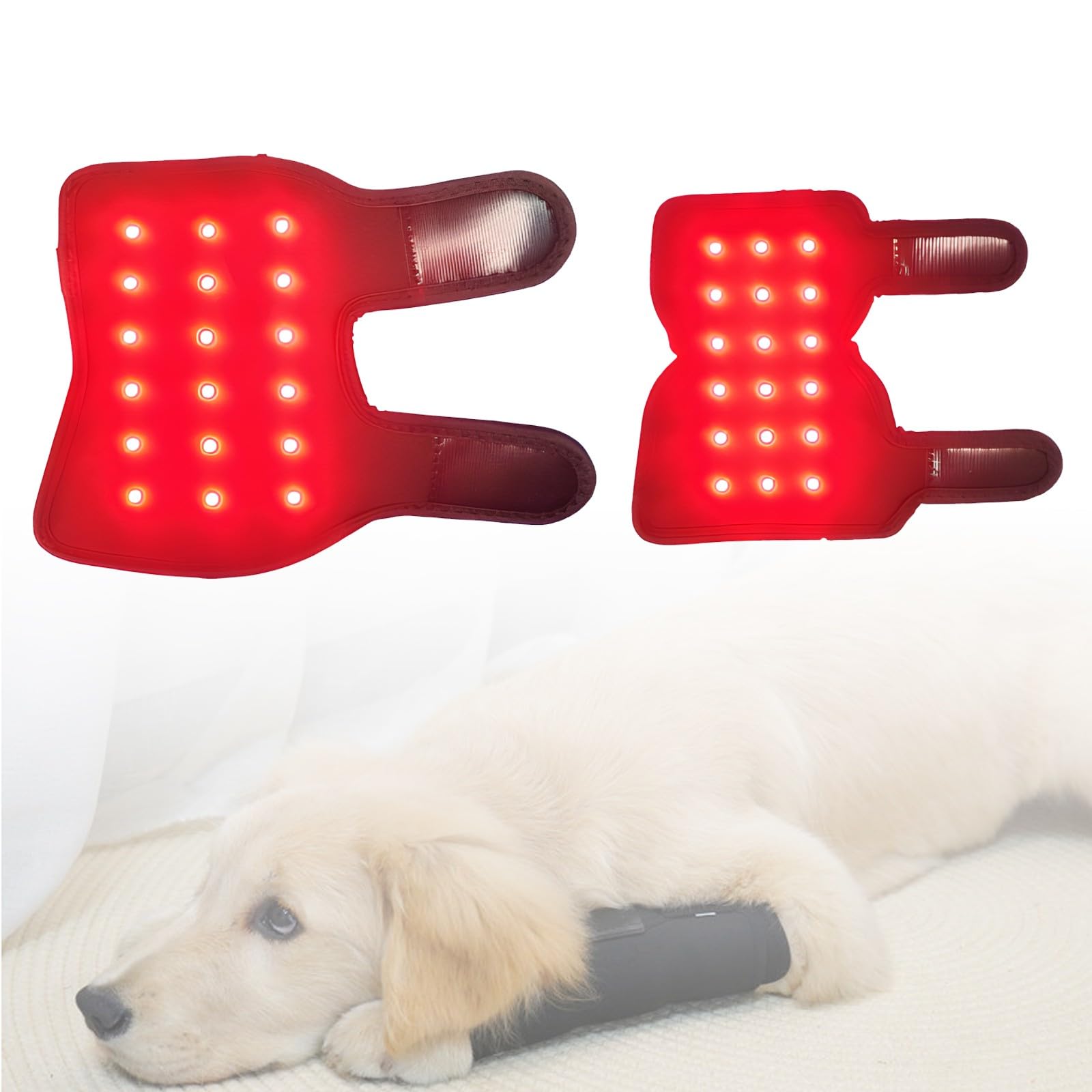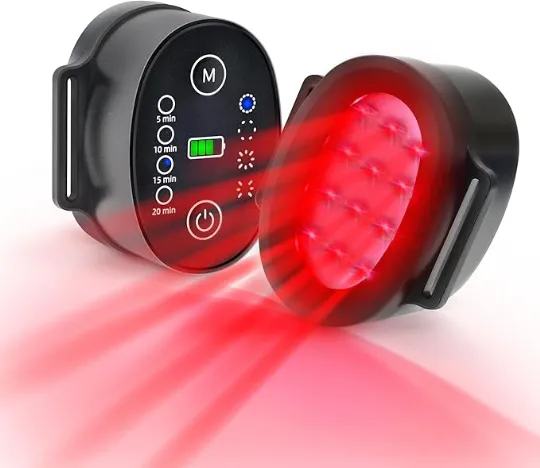The Ultimate Handbook to Red Light Therapy Dogs and Its Benefits
Wiki Article
Just How Red Light Therapy Can Improve Your Dog's Overall Health
Red Light Therapy has emerged as a promising choice for enhancing canine health. This non-invasive treatment boosts mobile activity and promotes recovery in dogs dealing with different ailments. Several animal proprietors report visible advantages, including discomfort relief and boosted mobility. Nonetheless, comprehending the potential applications and underlying systems is necessary. What specific conditions can it address, and how can it be securely incorporated right into a pet's care programs? The solutions might amaze you.Understanding Red Light Therapy: What It Is and Just how It Functions
Although red light therapy has actually gotten appeal in human medication, its application for canines is increasingly acknowledged for its potential advantages. This non-invasive treatment makes use of specific wavelengths of light, commonly in the red and near-infrared spectrum, to stimulate mobile function. The underlying concept involves the absorption of light by mitochondria, which improves ATP production and boosts mobile metabolic process.As an outcome, red light therapy advertises improved flow and aids in tissue fixing. The therapy is provided through gadgets such as lasers or LED panels, which can be directed at details areas of a pet's body. Therapy sessions are generally short, making it a practical choice for family pet owners.
Comprehending this technology's mechanisms can help caregivers make informed choices about their dog's healthcare. As study proceeds to evolve, the rate of interest in red light therapy as a complementary therapy technique for different canine problems is likely to grow.

Benefits of Red Light Therapy for Dogs
Red light therapy offers a number of significant benefits for dogs, consisting of reliable pain alleviation and an accelerated recovery procedure. This therapy can improve flexibility and flexibility, making it specifically valuable for maturing or harmed animals. As more pet dog proprietors look for alternative treatments, recognizing these advantages becomes significantly vital.Pain Alleviation Applications
Many canine owners are transforming to red light therapy as an encouraging option for easing discomfort in their family pets. This non-invasive therapy utilizes particular wavelengths of light to penetrate the skin, stimulating cellular activity and lowering swelling. Pet dogs experiencing from persistent problems such as arthritis, hip dysplasia, or post-surgical pain might experience substantial relief with this therapy. Researches suggest that red light therapy can boost blood circulation, assisting to supply crucial nutrients to impacted areas, better adding to discomfort decrease. In addition, it may help to decrease the dependence on pharmaceutical painkiller, which often feature undesirable negative effects. Because of this, many veterinarians are significantly recommending red light therapy as a effective and safe choice for managing discomfort in pets.
Accelerated Healing Process
The benefits of red light therapy extend beyond pain alleviation, playing an important role in increasing the recovery procedure for canines. This cutting-edge treatment advertises mobile regeneration, promoting the manufacturing of ATP, which improves energy schedule for healing cells. Additionally, red light therapy enhances blood flow, leading to improved oxygen and nutrient shipment to injured areas. This increased flow not only help in faster healing however likewise reduces inflammation, an usual obstacle to recovery. On top of that, the therapy motivates collagen production, critical for tissue repair service and regrowth. On the whole, by facilitating these organic procedures, red light therapy greatly reduces recovery times, allowing pet dogs to return to their typical tasks quicker and with greater vigor.Improved Mobility and Versatility
Boosted mobility and adaptability are substantial advantages of red light therapy for pets, specifically for those experiencing joint discomfort or stiffness. This non-invasive therapy uses specific wavelengths of light to pass through tissues, promoting enhanced circulation and reducing inflammation. Therefore, canines commonly experience relief from discomfort related to joint inflammation, hip dysplasia, or post-surgical healing. Normal sessions can boost mobile repair and boost muscle mass feature, permitting pet dogs to regain their natural variety of movement. Owners have actually reported noticeable renovations in their animals' capacity to run, jump, and participate in activities they as soon as delighted in (Red Light Therapy Dogs). Eventually, red light therapy not only helps ease pain yet additionally adds to an extra active and meeting way of living for canines, improving their general lifestyleConditions That Can Be Cured With Red Light Therapy
Although red light therapy has actually obtained appeal in different fields, its application in vet treatment, specifically for canines, has shown promise in dealing with a series of problems. This non-invasive treatment method is thought to help in reducing pain and inflammation associated with arthritis, aiding older dogs regain flexibility. In addition, it has been utilized to help in the healing of injuries, burns, and surgical lacerations, promoting faster recuperation times.Skin conditions, such as dermatitis and warm areas, may also respond favorably to red light therapy, reducing inflammation and encouraging healthier fur development. The therapy can be useful for canines enduring from conditions like hip dysplasia, ligament injuries, and muscular tissue strains. By stimulating cellular repair work and improving flow, red light therapy uses a holistic approach to enhancing the overall wellness of dogs, providing alleviation and promoting a much better lifestyle.
The Science Behind Red Light Therapy
Red light therapy operates the concept of photobiomodulation, which entails the application of particular wavelengths of light to promote cellular procedures. These wavelengths, usually ranging from 600 to 1000 nanometers, penetrate the skin and are taken in by mitochondria, the energy-producing components of cells. This absorption boosts ATP production, resulting in increased energy availability for cellular features.
Studies recommend that red light therapy may likewise modulate immune reactions and assistance overall cellular health. By utilizing these organic systems, red light therapy supplies a non-invasive therapy choice that can add significantly to a pet dog's health and recuperation from different problems.
How to Incorporate Red Light Therapy Into Your Dog's Routine
Including red light therapy right into a canine's regimen can be an uncomplicated procedure, provided that pet dog owners approach it with treatment and uniformity. Picking an appropriate gadget this article is basic, as alternatives array from portable units to larger panels (Red Light Therapy Dogs). Proprietors ought to begin by presenting the therapy progressively, permitting their dogs to accommodate to the light exposure. Procedure can be set up for about 10 to 20 minutes, preferably 2 to 3 times a week, depending on the pet's demands and the guidance of a vetSetting a comfortable atmosphere is vital; utilizing a peaceful room where the dog really feels relaxed can boost the experience. During the sessions, proprietors can engage their family pets with soothing voices or gentle stroking to create a calming environment. Monitoring the pet's response is vital to assure the therapy is pleasurable and useful, ultimately aiding to enhance their general wellness.
Safety Considerations and Measures for Red Light Therapy
When More Help considering red light therapy for canines, safety and security must constantly be a top concern to guarantee a favorable experience. Pet dog owners need to get in touch with a vet prior to starting any kind of therapy, specifically for dogs with pre-existing conditions or those taking medicines. It is necessary to choose devices especially designed for animals, as human gadgets might not appropriate.Proper eye defense is crucial; both the trainer and the pet dog should wear safety glasses to protect their eyes from potential damage. Furthermore, sessions should be monitored carefully to stay clear of too much exposure. It is a good idea to begin with much shorter sessions and gradually boost duration based on the pet dog's response.
Proprietors ought to also observe their family pets for any type of indications of pain or negative reactions throughout and after therapy. By following these safety and security considerations, red light therapy can be a safe and beneficial option for improving a canine's wellness.
Often Asked Concerns
How Often Should I Utilize Red Light Therapy on My Dog?

Can Red Light Therapy Change Standard Veterinary Treatments?
Red light therapy should not replace traditional veterinary treatments. While it might match treatments by advertising healing and lowering discomfort, consulting a vet continues to be essential see this here for thorough treatment and addressing underlying health problems in pet dogs.Exist Any Type Of Side Impacts of Red Light Therapy for Dogs?
Red light therapy for canines typically has marginal adverse effects, such as temporary skin inflammation or warmth at the treatment site. A lot of canines endure the therapy well, but keeping track of for any type of unusual reactions is advised.What Is the Perfect Duration for each and every Red Light Therapy Session?
The optimal duration for every red light therapy session generally ranges from 10 to 20 minutes, depending on the dog's certain needs and problem. Assessment with a vet is advised to tailor the treatment suitably.Is Red Light Therapy Ideal for All Pet Dog Types?
Red light therapy is typically appropriate for most pet dog breeds. Nevertheless, individual health conditions and sensitivities might influence its applicability. Consulting a vet guarantees the therapy is safe and useful for each and every specific dog.Numerous pet dog proprietors are transforming to red light therapy as a promising option for reducing pain in their pet dogs. Boosted wheelchair and adaptability are substantial benefits of red light therapy for dogs, specifically for those experiencing from joint pain or stiffness. Red light therapy runs on the principle of photobiomodulation, which includes the application of details wavelengths of light to boost mobile processes. Study indicates that red light therapy can advertise recovery, decrease swelling, and reduce discomfort in pets. Red light therapy for canines generally has very little side results, such as short-term skin inflammation or warmth at the therapy website.
Report this wiki page